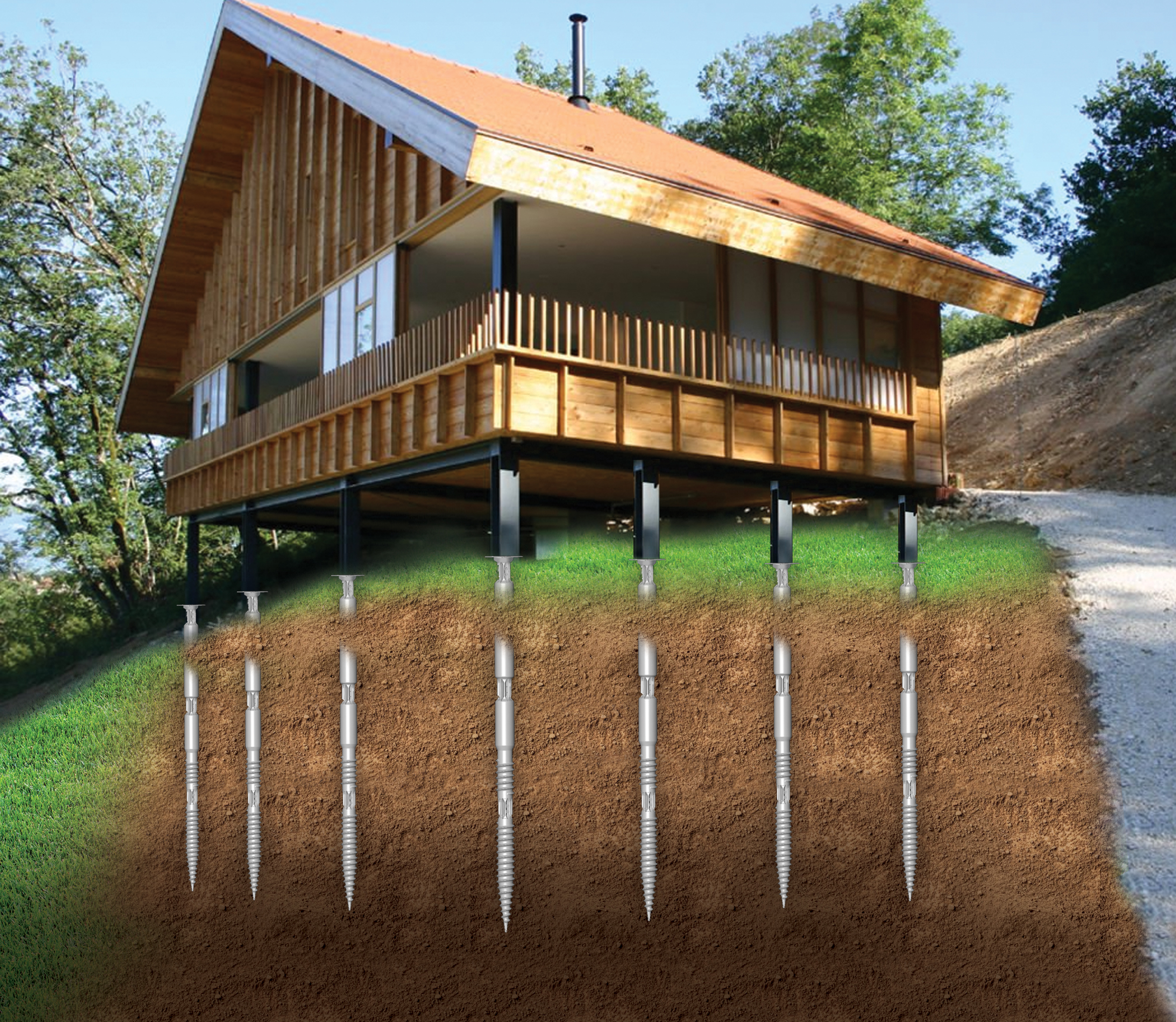Tuesday, September 30, 2025
Foundations for Timber Frame Houses – Why Screw Piles?

Building a timber frame house is synonymous with speed and a modern approach to investment. The choice of the right foundation is crucial for the stability and durability of the entire structure. Traditional solutions, such as slabs or strip footings, though proven, often involve lengthy earthworks, the need for concrete pouring, and waiting for it to set. That is why more and more investors and construction companies are paying attention to innovative alternatives. One of them is screw piles – a solution that revolutionizes the foundation process and perfectly fits the specifics of timber frame construction.
Timber Frame Houses and Foundation Specifics
Timber frame houses, also known as Canadian or modular houses, are gaining popularity due to their fast construction time, energy efficiency, and lightweight structures. Their frame is made of wood or steel, which significantly reduces the load transferred to the foundation compared to masonry buildings. Despite this lightness, a solid foundation is absolutely essential to ensure stability, protection against moisture, and proper load transfer to the ground.
Traditional foundations, such as concrete strip footings or slabs, are effective but require large-scale earthworks and excavation. One must also account for the long curing time of concrete, which often delays further construction stages. In addition, traditional foundations are susceptible to adverse weather conditions, such as rain or frost, which can halt work. Their construction also involves high water consumption and the generation of construction waste. These limitations encourage the search for modern, more efficient, and ecological alternatives that meet the requirements of fast and precise timber frame construction.
Screw Pile Foundations – Definition and Principle of Operation
Screw piles are an innovative foundation system based on steel columns with a helical end. They are screwed into the ground using specialized equipment, resembling the process of turning a giant screw. This installation method ensures speed and precision, without the need for deep excavations or concrete pouring.
Their principle of operation relies on transferring loads from the building’s structure to deeper, more stable soil layers. The helix at the end of the pile serves as a bearing element, distributing the load over a large surface. This makes screw piles exceptionally effective, even in areas with weak bearing capacity, waterlogged soils, or diverse geotechnical conditions.
The history of pile foundations goes back centuries, and their effectiveness is proven by historical buildings – for example, the wooden piles under Venetian palaces or those used in the settlement of Biskupin. Modern screw piles are a development of this idea, adapted to the demands of contemporary construction, and their global popularity – especially in Scandinavian countries and North America – proves their reliability.
In Poland, they are still relatively little known, often seen as a solution for “special tasks” or considered more expensive. However, this is a misconception, as in many cases their cost is comparable to or even lower than traditional methods, while the list of advantages is much longer.
Key Advantages of Screw Piles in Timber Frame Construction
Choosing screw piles for a timber frame house comes with numerous benefits that address the biggest challenges of modern construction:
Speed of installation: Installing piles for a typical single-family house takes only 1–2 days, and work can be carried out regardless of weather conditions. There is no need to wait for concrete to cure, which allows immediate continuation of construction.
Cost reduction: No need for transporting and disposing of excavated soil, renting heavy equipment (such as excavators or concrete mixers), and the significant reduction of labor time translates into lower total investment costs.
Minimal environmental impact: The installation process is clean, does not generate noise, vibrations, or waste. Piles can be easily dismantled, and the site can be restored to its original state.
Versatility: Screw piles work in all soil types, from sandy to clayey to waterlogged. They are ideal for construction on sloped plots or hard-to-reach locations.
Durability and resistance: Professionally installed piles are corrosion-protected (hot-dip galvanization), what can provide them with a lifespan exceeding 100 years.
Some investors fear that screw piles may not be stable or durable enough. This concern is unfounded. The bearing capacity of piles is calculated based on rigorous geotechnical analyses, while the installation process is continuously monitored by checking torque and depth, guaranteeing the required load capacity.
Unlike traditional driven piles, which can cause vibrations and damage to neighboring buildings, screwing in screw piles is a vibration-free and safe method for surrounding structures.
Choose Modern Foundation Piles!
Foundations for timber frame houses with screw piles are a modern, efficient, and economical solution that eliminates the disadvantages of traditional methods. Their speed, durability, and versatility make them the optimal choice for anyone who values time, precision, and ecology.
If you are considering building a timber frame house, contact us. We will analyze your project and propose the optimal foundation solution to provide your investment with solid and durable support.